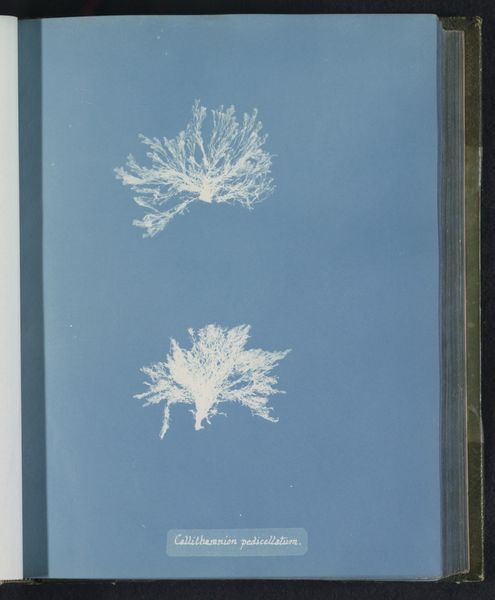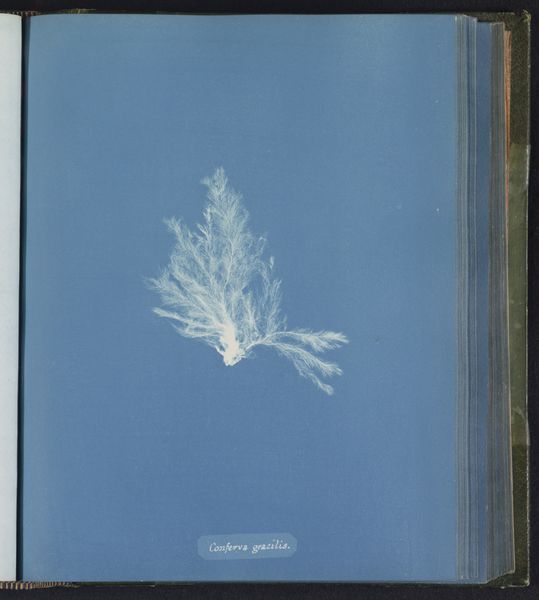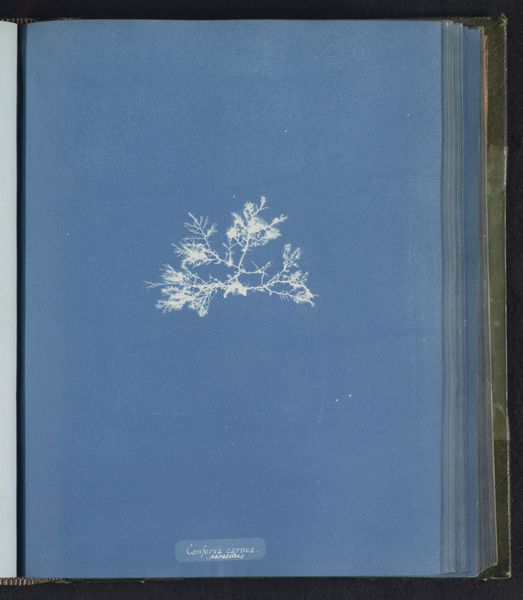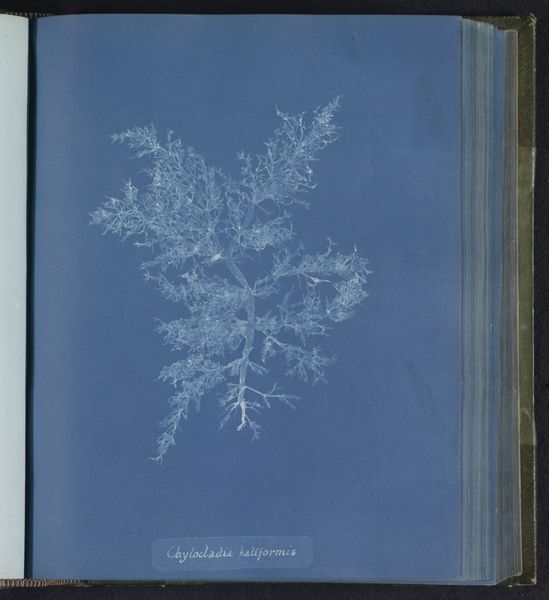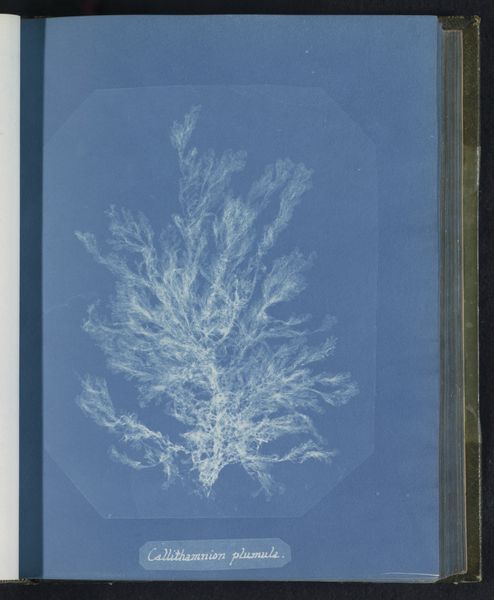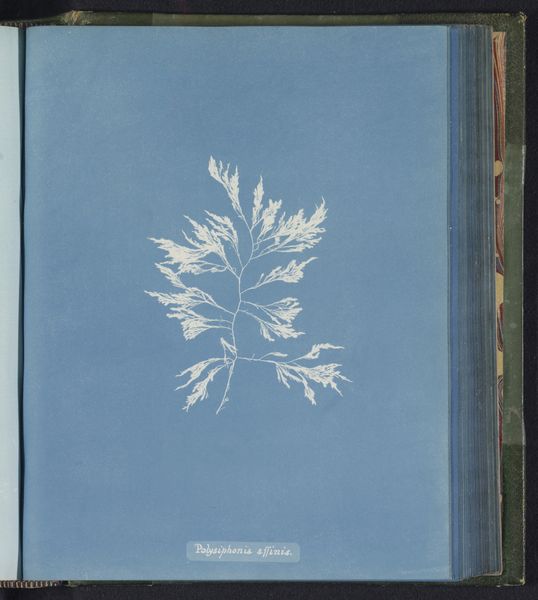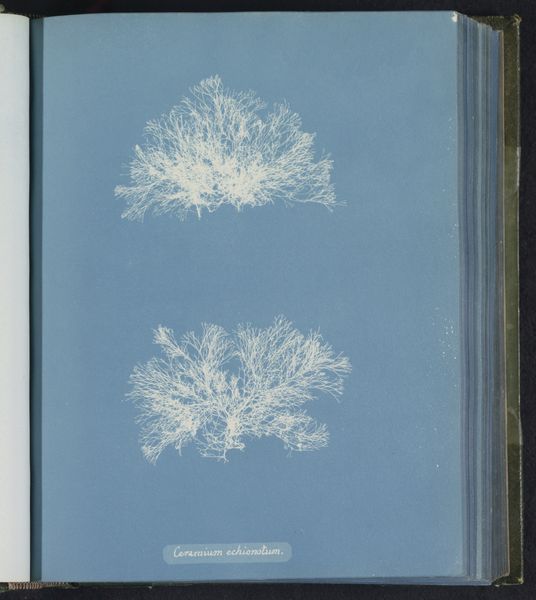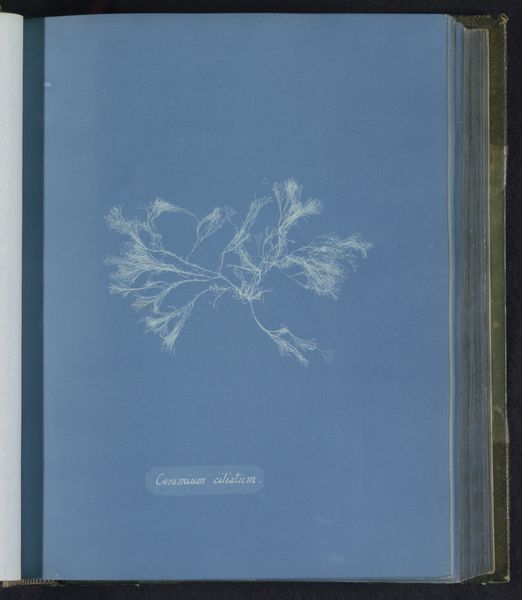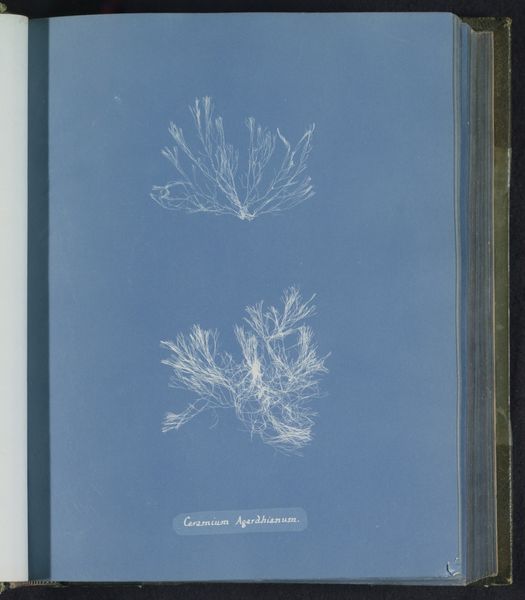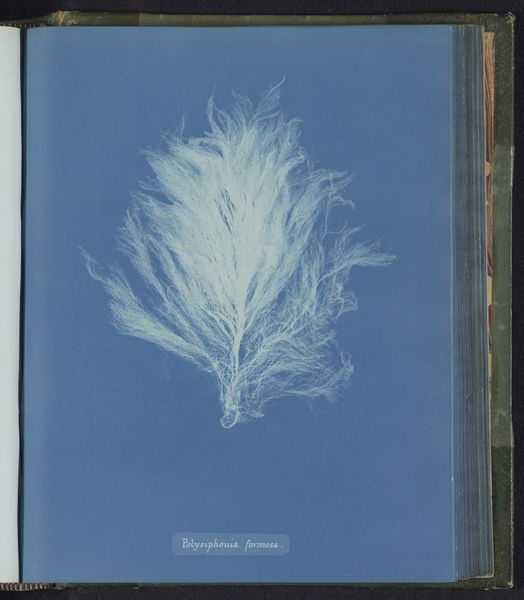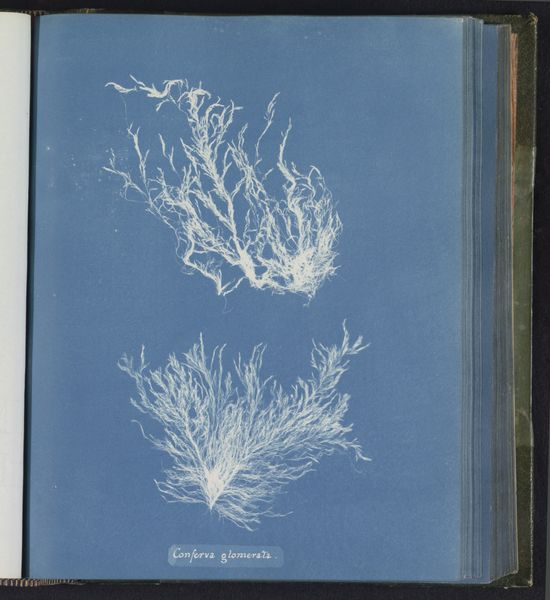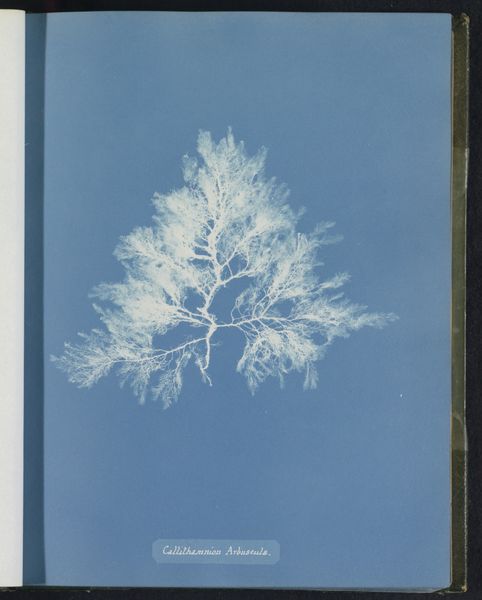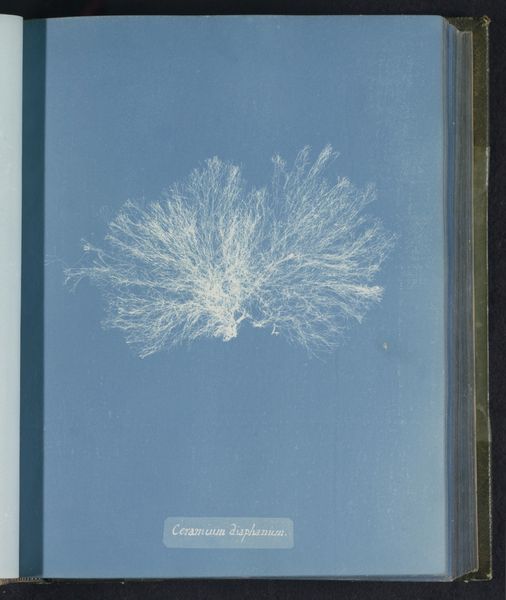
print, cyanotype, photography
# print
#
form
#
cyanotype
#
photography
#
line
#
naturalism
Dimensions: height 250 mm, width 200 mm
Copyright: Rijks Museum: Open Domain
Curator: Before us we have Anna Atkins' "Conferva glaucescens", a cyanotype print from approximately 1843 to 1853. Editor: Wow, it's ethereally beautiful! Like a ghostly aquatic fern floating in a cyan dream. I love the negative space, the delicate branching... it’s incredibly calming. Curator: Calm is interesting. Considering Atkins' scientific background, what we are looking at transcends simple aesthetics. It's an indexical trace. Through a painstaking, handcrafted photochemical process, the subject imprints itself, making this simultaneously art and scientific record. The use of cyanotype—relatively inexpensive and simple to produce—placed photography within reach of scientific endeavors. Editor: You know, it's interesting to think about Atkins in her darkroom, carefully arranging these algae fronds and exposing them to light. There's something meditative about that process, isn't there? Sunlight doing its delicate work, like a cosmic collaboration between her, the algae, and the cosmos. And now here we are centuries later looking at this delicate thing! Curator: Exactly! Furthermore, her choice to publish these photograms as scientific illustrations subverted the male-dominated space of science. It was also an embrace of photography's potential beyond portraiture, at a time when it was regarded primarily as such. She made visible what otherwise might have been deemed insignificant or too mundane for artistic exploration. Editor: Absolutely, there's something revolutionary in noticing and immortalizing the minute details, these smaller organisms, with such care. We always focus on the grandiose and impressive in art, whereas her lens and methodology bring a deep presence into otherwise underappreciated or 'common' flora. It makes you consider the potential of what could be made, by us today! Curator: Absolutely. In a world obsessed with technological advancement, there's something to be said about embracing handcrafted processes to create this effect. It calls attention to our modern-day practices of mass image consumption, mass-scale agriculture, and how Atkins chose the alternative. Editor: I suppose seeing such a detailed rendition of aquatic foliage against the azure evokes both awe and respect for our natural environments. It speaks to the quiet, almost silent processes behind life on earth, right? What do you think of that cyan blueprint tone now that we've shared this space with it for a brief moment? Curator: This specific hue connects it to larger discussions around material availability. Beyond artistic merit, cyanotypes use inexpensive and easily attainable materials which make production less financially straining for artists. Editor: True, there's power in such simple things, creating something of such impact. And what could be more accessible than sunlight? It almost feels like a magical secret—Atkins, a translator for both science and beauty.
Comments
No comments
Be the first to comment and join the conversation on the ultimate creative platform.
